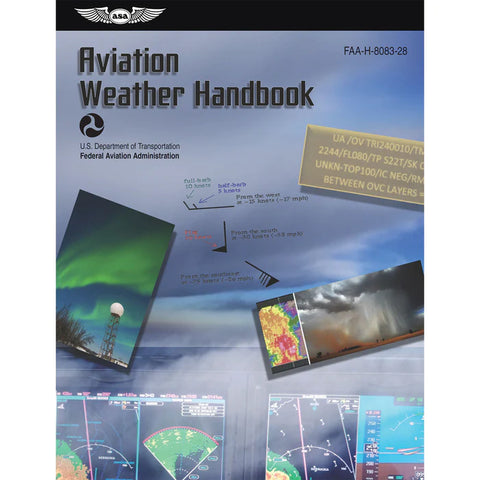AIRMET vs SIGMET: Everything You Need to Know (Guide)

Pilots count on accurate and timely weather data to make informed decisions both before and during their flights.
Good pilots never go anywhere without checking and rechecking the weather. It may be clear and calm on the ground, but we know that things could look much different en route, especially during a long cross-country flight.
AIRMETs and SIGMETs are important tools during the flight planning process and while underway. Think of them as the aviation version of the local weather report and the Emergency Broadcast System (EBS) used on TV and radio to alert citizens of severe weather conditions on the ground.
Both AIRMETs and SIGMETs provide pilots with abbreviated in-flight weather advisories for both existing and predicted adverse conditions.
Conditions must be widespread, affecting an area of at least 3,000 square miles, to trigger an AIRMET or SIGMET. Forecasts issued when the Aviation Weather Center (AWC) determines that the conditions pose a degree of risk to aircraft safety.
But what is the difference between the two? What types of AIRMET can be issued and what does each mean? How do you read a graphical AIRMET? Is one type more dangerous than the other?
Read on to get answers and learn everything you need to know!
AIRMET
An AIRMET, or Airman’s Meteorological Information, is an in-flight weather bulletin that is issued when there are weather phenomena or conditions present which may affect the safety of lighter aircraft, though the information they contain is relevant for all aircraft.
What is an AIRMET?
The types of conditions that may trigger the issuance of an AIRMET are divided into three categories, each with a unique designation. Pilots whose flight plans take them into an area with an active AIRMET may wish to consider modifying their flight plans to avoid the inclement weather.
Since it is unlikely that the weather condition in question will impact the entire 3,000 square mile area at once, it may be possible to navigate around the hazards.

The three types of AIRMETs, otherwise known as WAs, are:
- AIRMET Sierra
An AIRMET Sierra(S) is issued for mountain obscuration and/or IFR conditions with ceilings that are less than 1,000’ and/or visibility of under 3 miles over an range of at least 50% of the area covered by the AIRMET
- AIRMET Tango
An AIRMET Tango(T) is issued for light to moderate turbulence sustained surface winds at 30 knots or higher, or low-level windshear.
- AIRMET ZULU
An AIRMET Zulu(Z), is issued when weather conditions are at freezing levels making light to moderate icing a possibility.
Graphical AIRMETs, or G-AIRMETs are used to plot conditions on a map for visual reference. Six unique colors and types of boundary lines depict the various conditions.
Review the Aviation Weather Center’s What is an AIRMET? document to learn more about their graphical symbols and usage.
How often are AIRMETs issued?
AIRMETs are issued every six hours by the AWC starting at 0245 UTC (Zulu time). An AIRMET is valid for the period of six hours until the next regularly scheduled release, although the AWC can terminate them earlier if the condition causing the AIRMET resolves.
The issuance can also be extended if inclement conditions persist past the standard expiration time, make sure to check an official national weather service resource for the most up-to-date information.
SIGMET
A SIGMET, or Significant Meteorological Information, is an in-flight weather bulletin that is issued when there are extreme weather conditions present which may affect the safety of all aircraft in the vicinity.
What is an SIGMET?
The weather conditions that precipitate a SIGMET are substantially more severe than those that trigger an AIRMET. Pilots whose flight plans take them into an area with an active SIGMET should highly consider canceling the flight since conditions pose a significant threat.
Weather phenomena in an area under a SIGMET advisory is highly volatile and the rapidly evolving nature of the threat means that modifying the flight plan to simply skirt the adverse conditions is often not as feasible or prudent as it is with AIRMETs.
There are two categories of SIGMETs, one for weather patterns with more stable overall atmospheric conditions and the other for weather patterns characterized by rapid air movement, otherwise known as convection.

The two categories of SIGMETs are:
- Non-Convective SIGMET (WS)
This type of SIGMET is issued for conditions similar to but more severe than those of the three types of AIRMETs. A non-convective SIGMET can be issued for severe icing, severe to extreme turbulence, dust storms or sandstorms that lower visibility to less than three miles, and for volcanic ash.
The dust, sand, and ash are significant causes for concern because they can incapacitate engines.
- Convective SIGMET (WST)
This type of SIGMET is issued for the most dangerous of conditions with atmospheric instability. They cover severe thunderstorms with surface winds of greater than 50 knots, surface hail ¾ inch or larger in diameter, tornadoes, embedded thunderstorms, lines of thunderstorms(or thunderstorms with heavy precipitation affecting at least 40% of a region) and low level wind shear.
How often are SIGMETs issued?
Non-convective SIGMETs are an unscheduled forecast, and as such they are simply issued as needed when significant meteorological conditions that meet non-convective SIGMET criteria exist.
Once a non-convective SIGMET is issued, it is valid for 4 hours, except for non-convective SIGMETs relating to hurricanes. Hurricane-related non-convective SIGMETS are valid for 6 hours.
Convective SIGMETs are routinely issued at 55 minutes past the hour and remain valid for two hours, though additional unscheduled SIGMETs may be issued in the interim as conditions evolve.
If no severe or extreme weather is forecast or existing when a scheduled convective SIGMET is due to be released, the SIGMET will simply read: “CONVECTIVE SIGMET…NONE.”
For purposes of issuance, the United States is divided into three zones: Eastern, Central, and Western.
Reading and Decoding SIGMETs
For information on how to read/decode SIGMETs and find out if there were cancellations or renewals, check out Wikipedia's breakdown on the structure of SIGMETs.
How do you Find AIRMETs and SIGMETs?
Finding information on ForeFlight

Finding information on SkyVector
Finding information on AWC

Takeaway
The main thing to remember is that AIRMETs are issued when there is weather that may impact aircraft safety, especially that of smaller, lighter aircraft.
Weather conditions that prompt the issuance of a SIGMET are more severe and affect the safety of all aircraft regardless of size.
While you may be able to fly during an AIRMET by slight modifications to your flight plan, a SIGMET should be cause for seriously considering canceling your flight.
Check official national weather service resources to find when and where updated SIGMETs are issued.
Looking for some guidance and fresh perspective on making go/no-go flight decisions in inclement weather? Consult your copy of the ASA’s Navigating Weather.

|
Aviation Weather Handbook (Softcover)All pilots deal with weather. They must learn to appreciate good weather; to recognize and respect marginal or hazardous weather; and to avoid violent weather. Recognizing these weather patterns and making the appropriate decisions are critical to the successful outcome of all flights. This book discusses each aspect of weather as it relates to aircraft operation and flight safety. |
Want to learn more about Aviation Weather?
Our guides are designed to help student pilots become professional pilots and for private pilots to brush up on their knowledge and skills.
-
7 Types of Turbulence Every Pilot Should Know (What Causes It)
-
Ditch the Rough Ride: How to Avoid Turbulence (And What to Do if You Can’t)
-
12 Types of Clouds Pilots Must Recognize [#12 Can be Deadly]
Did you find this article helpful?
Do you think we missed anything important? Let us know in the comments below!



























